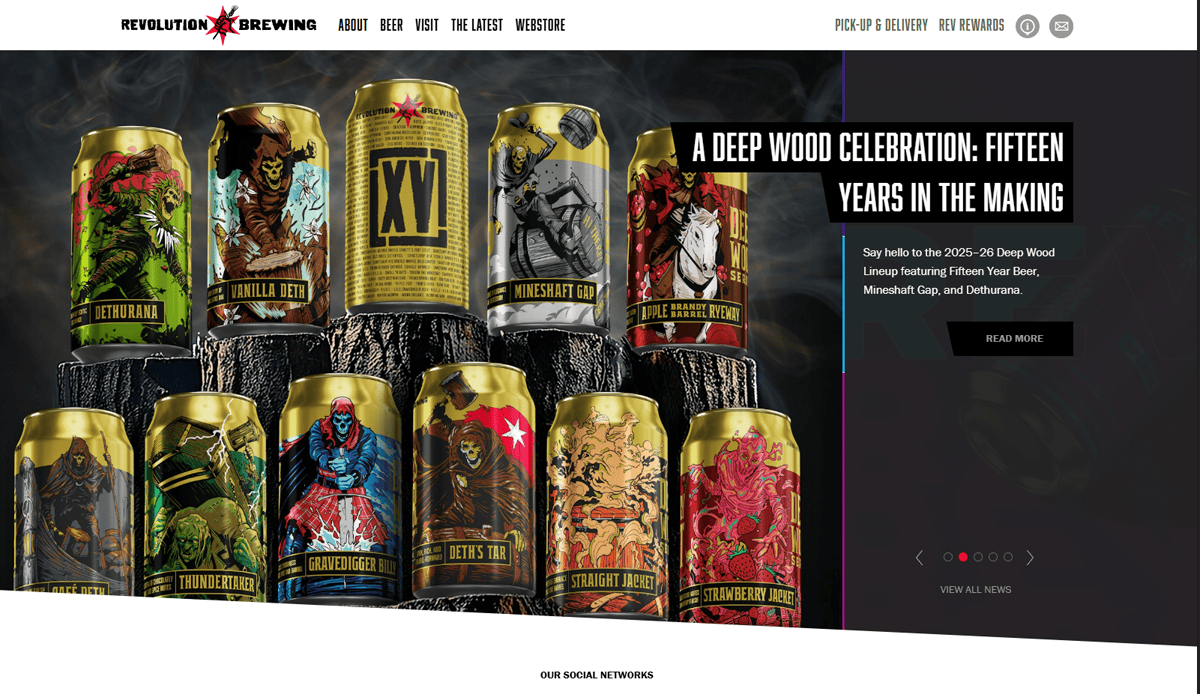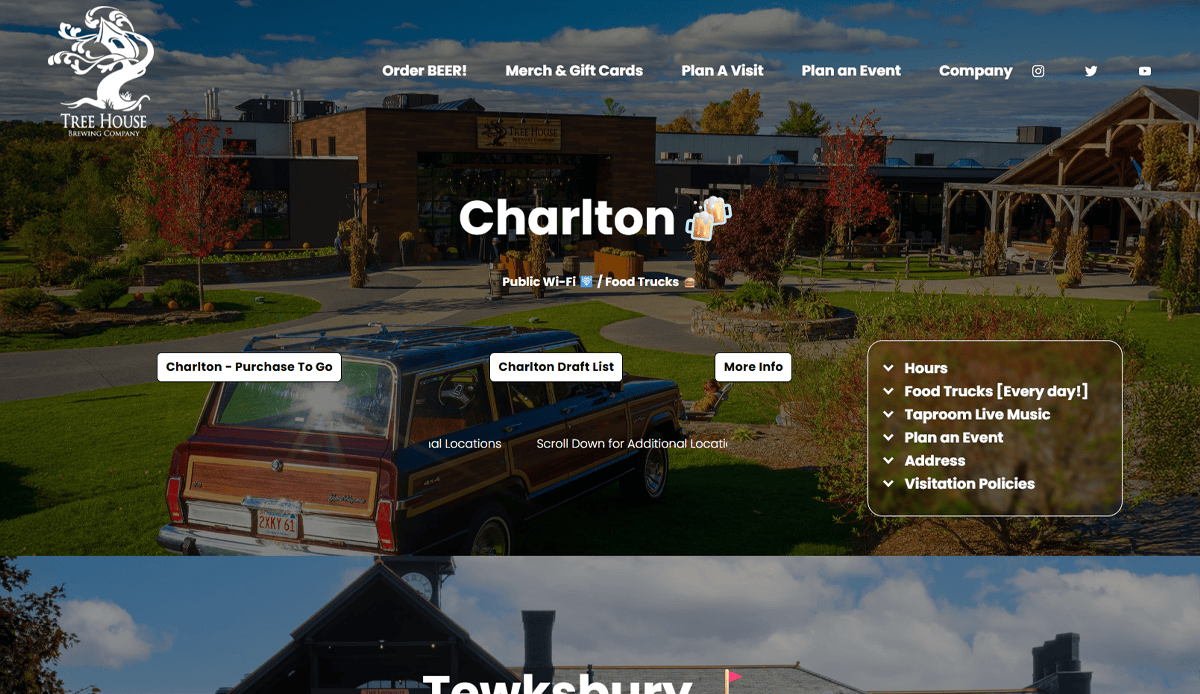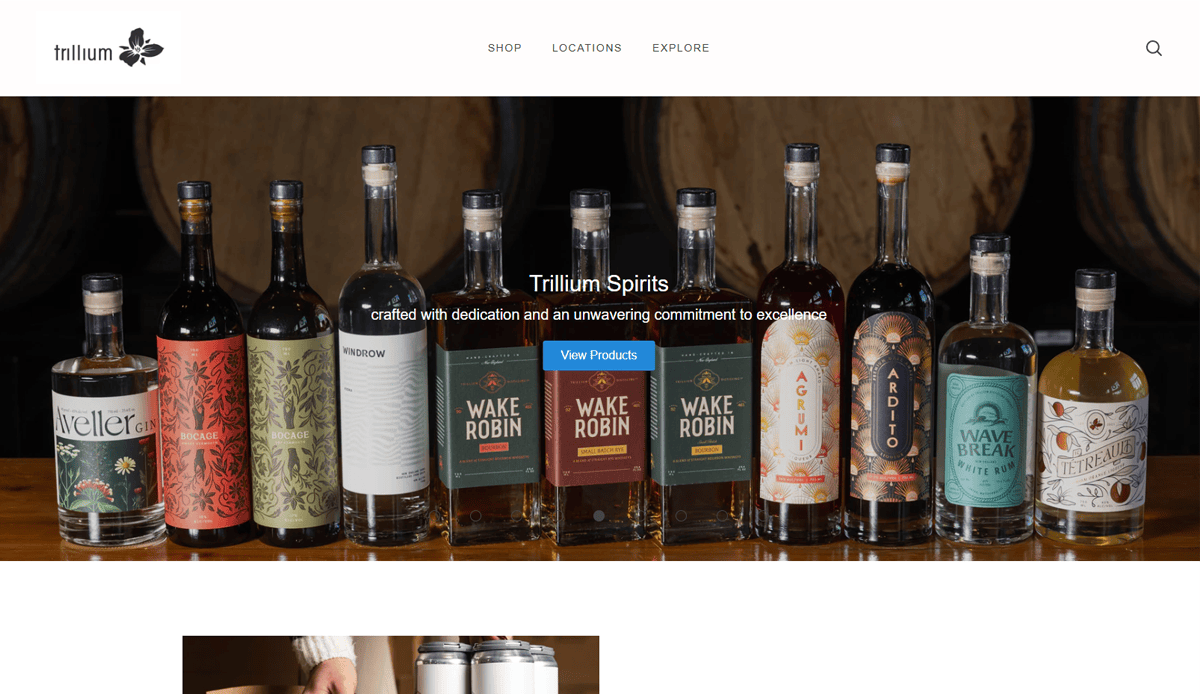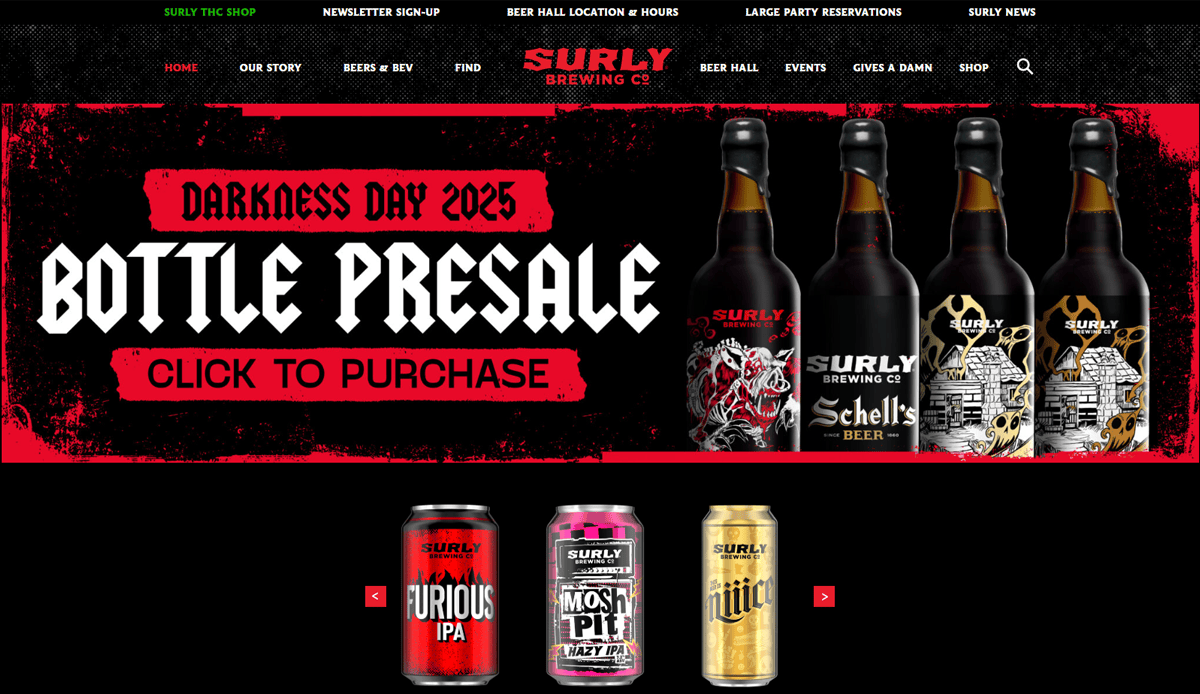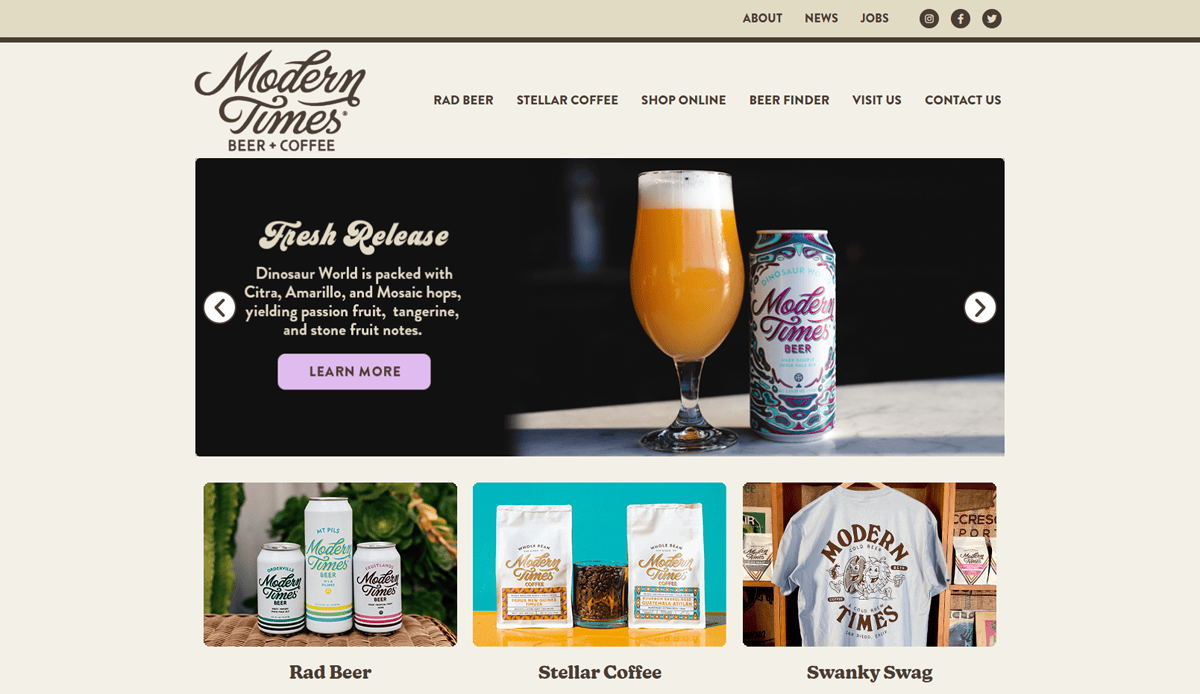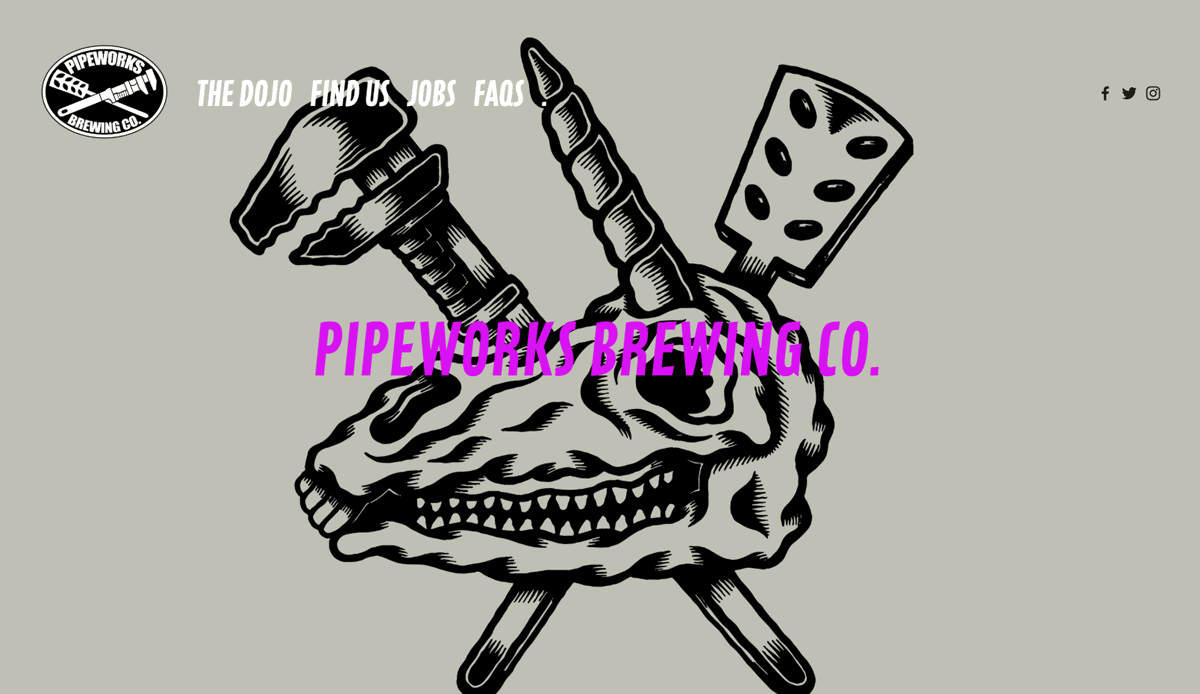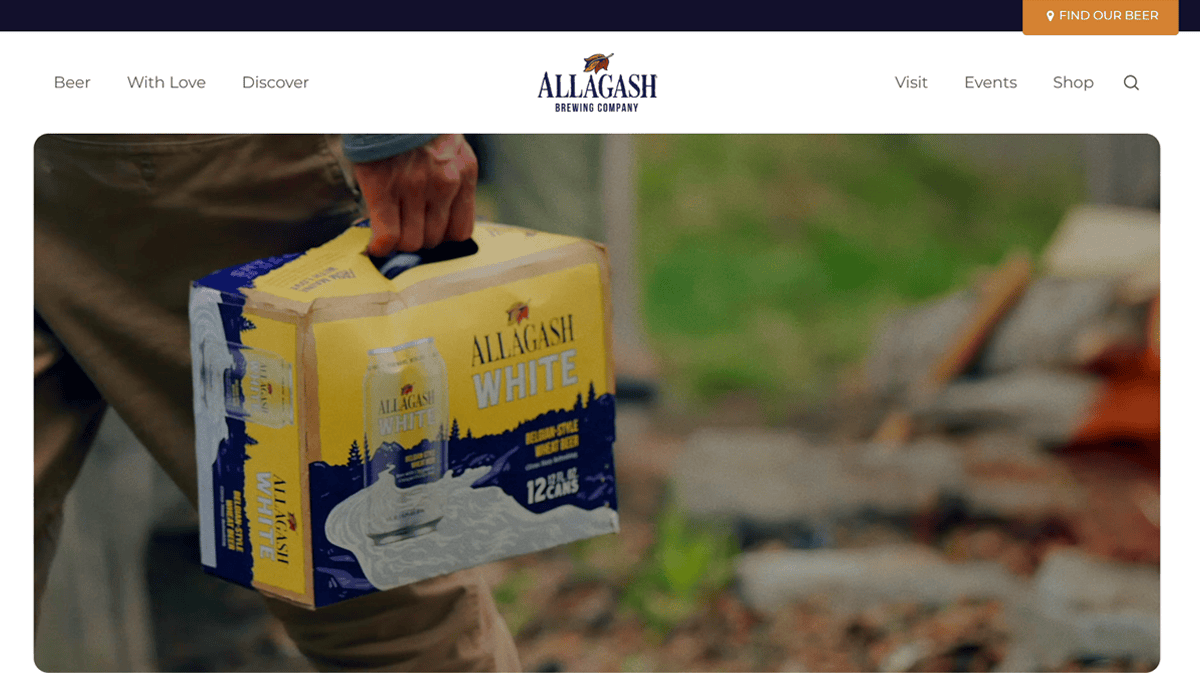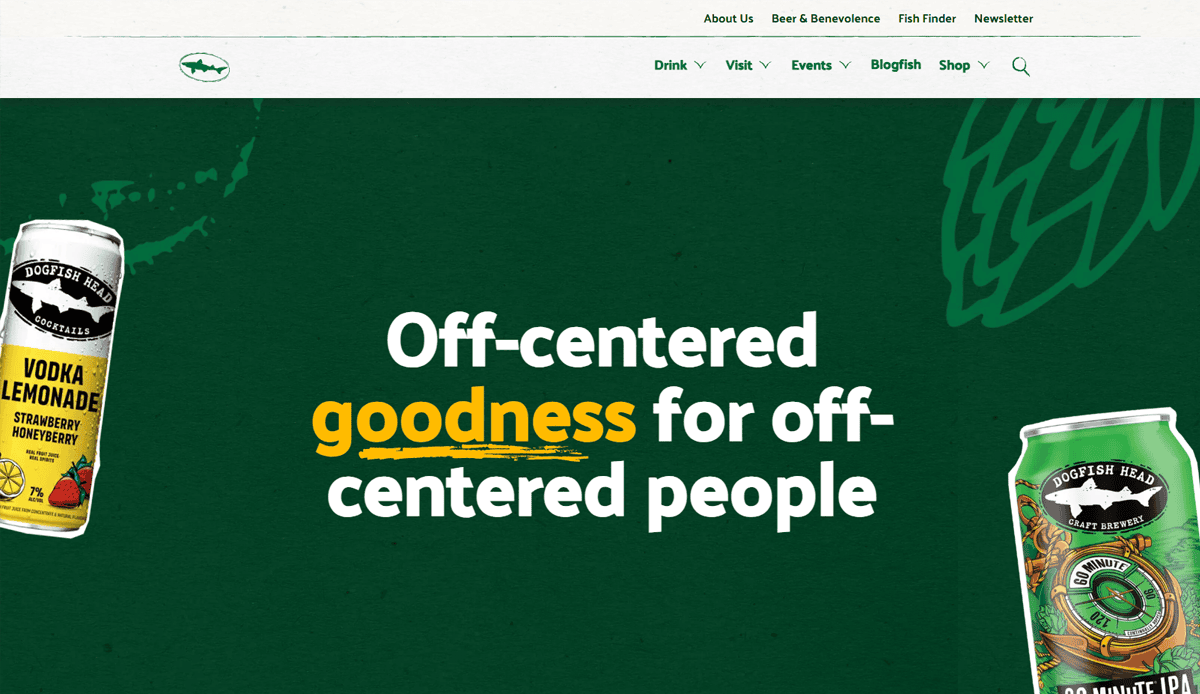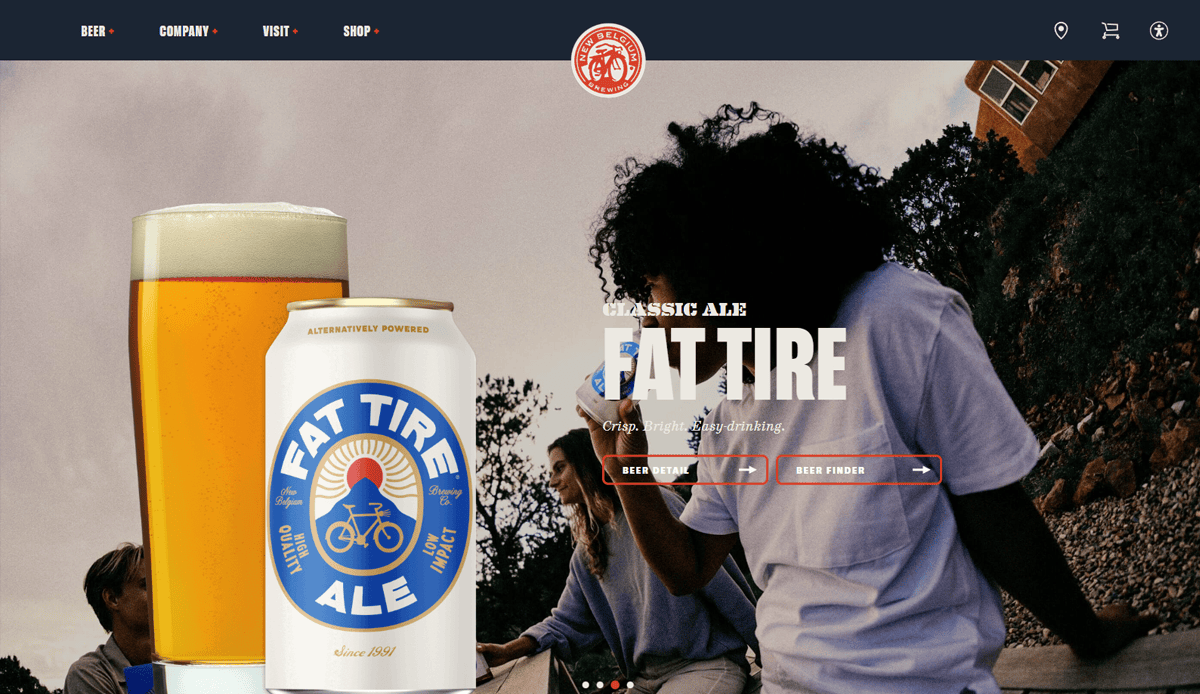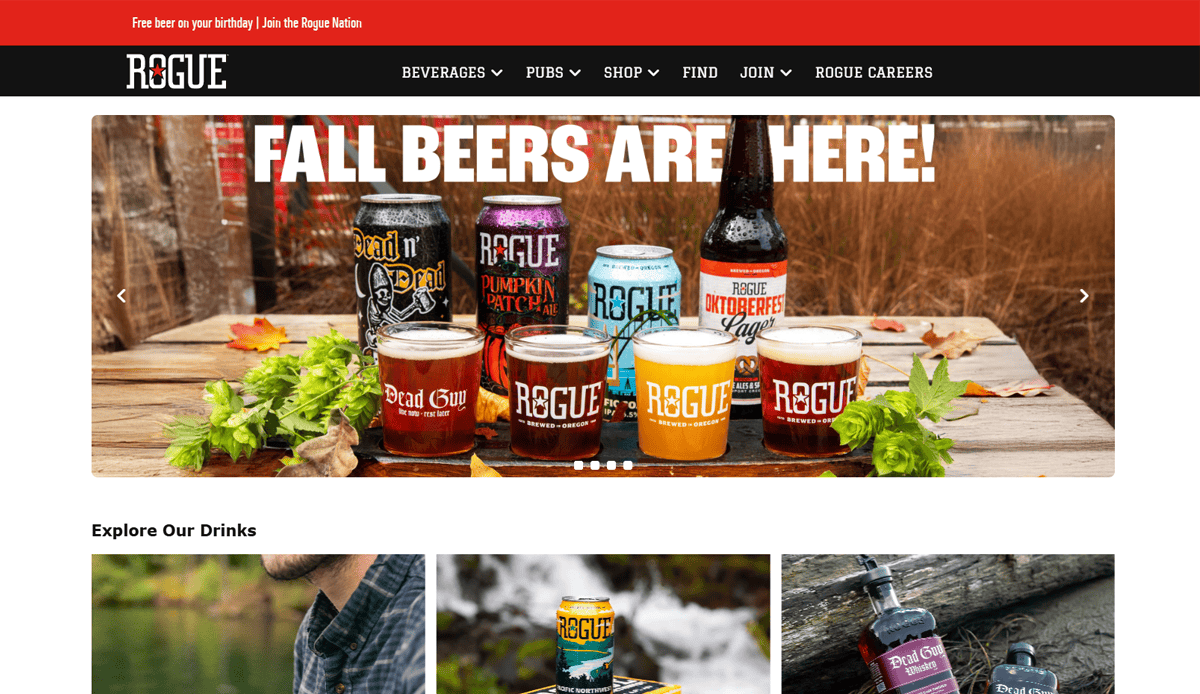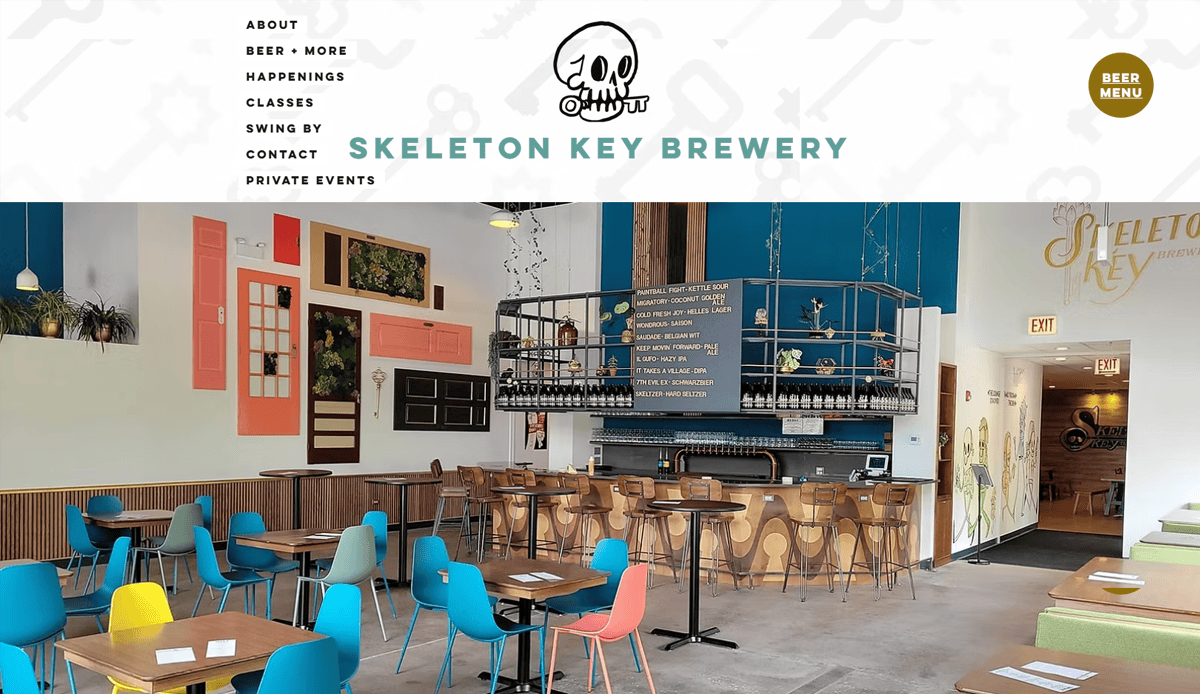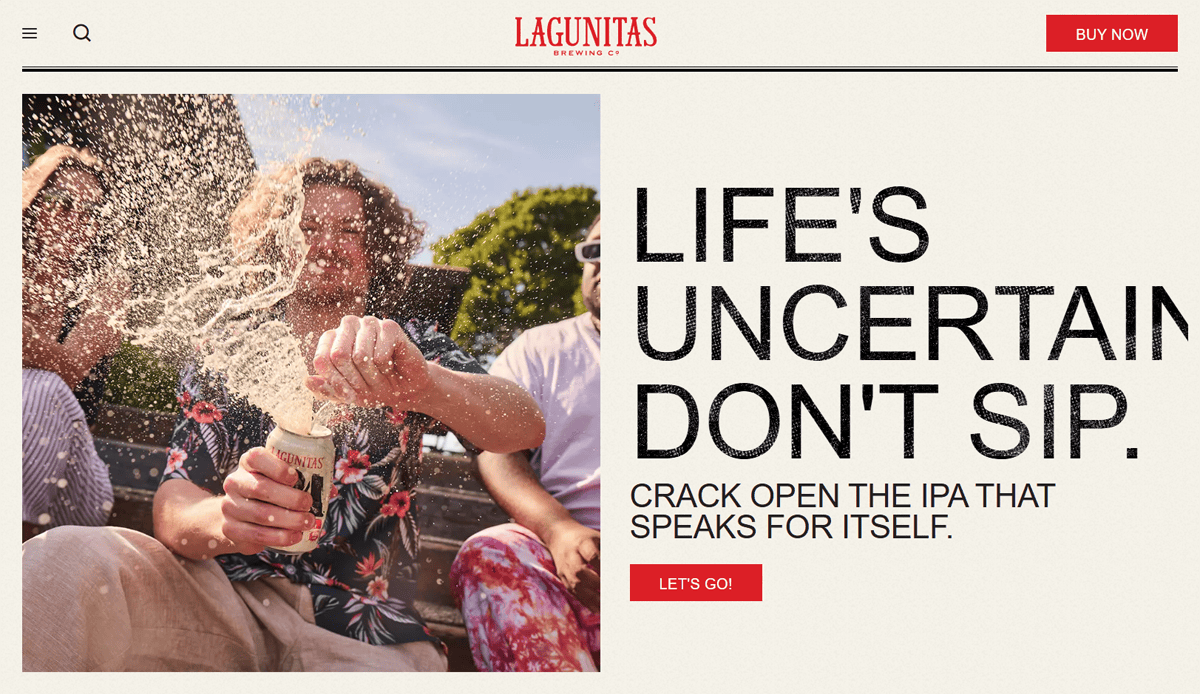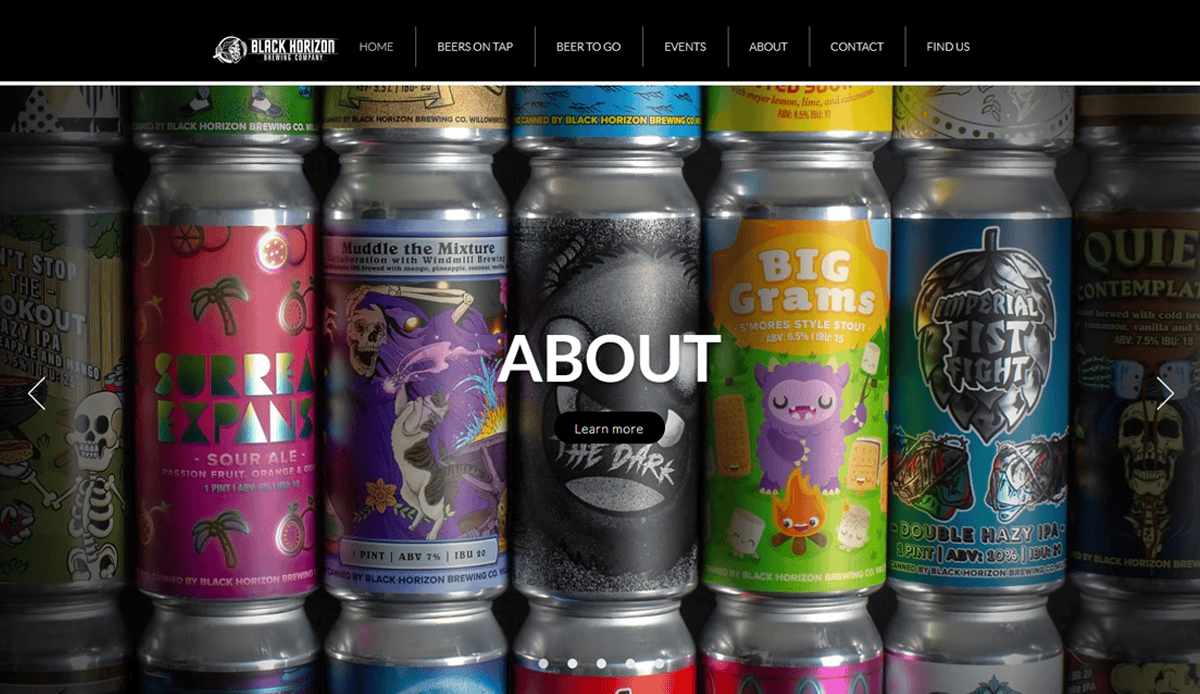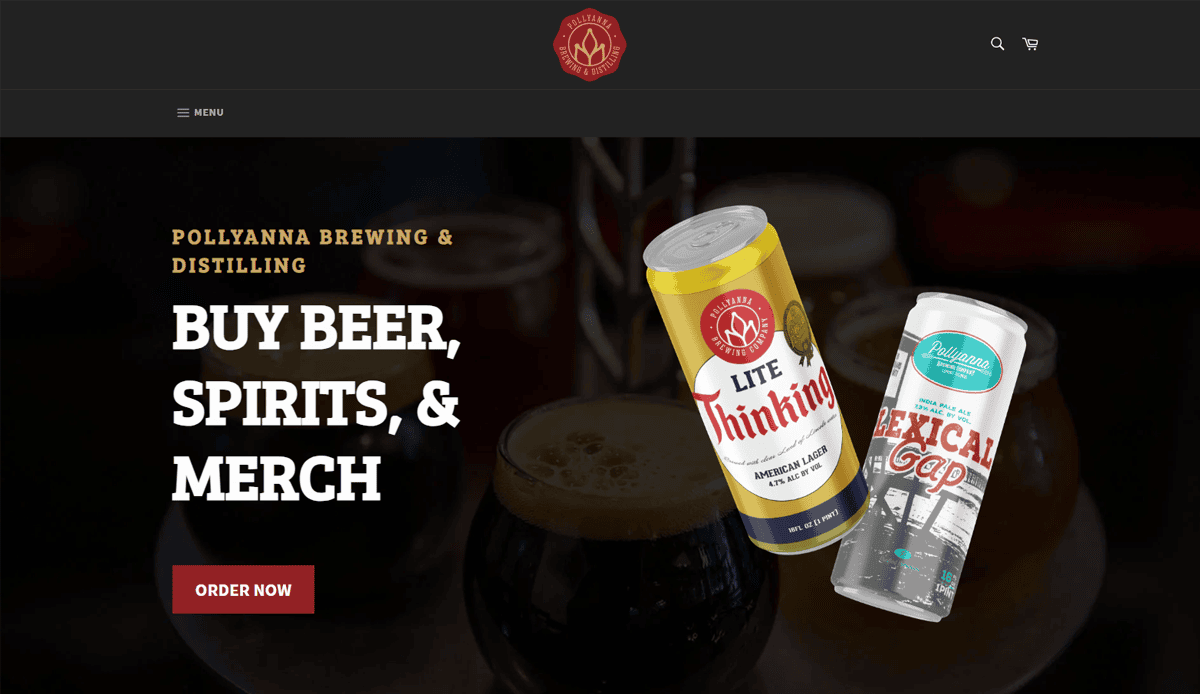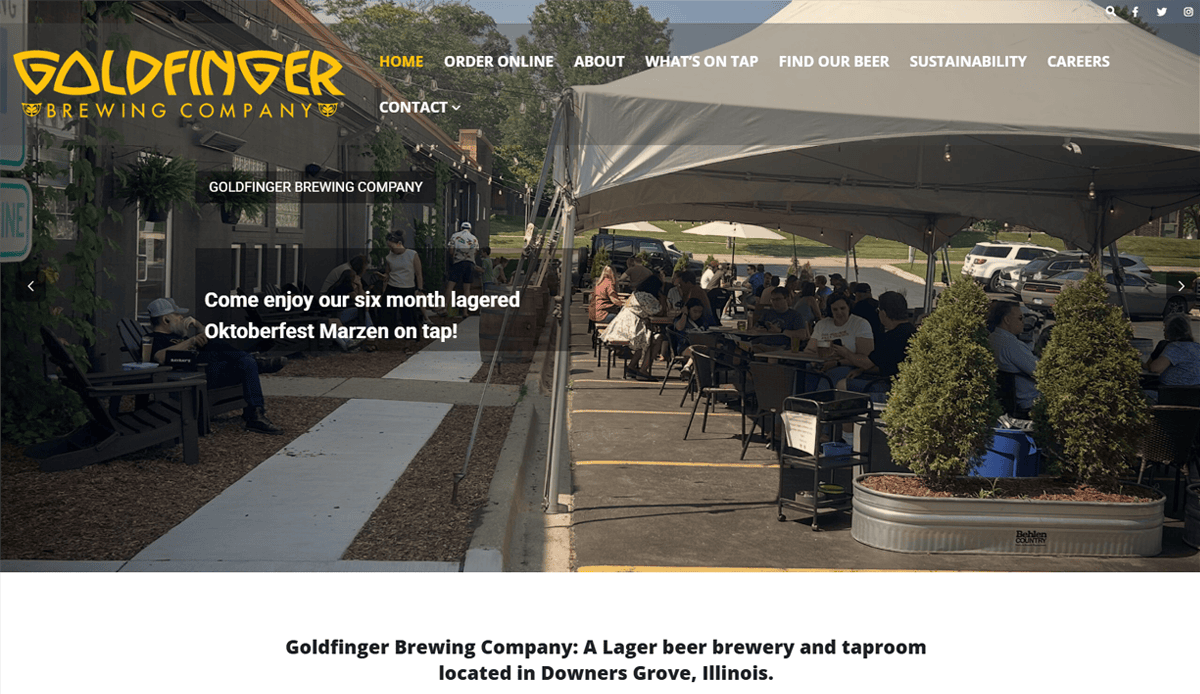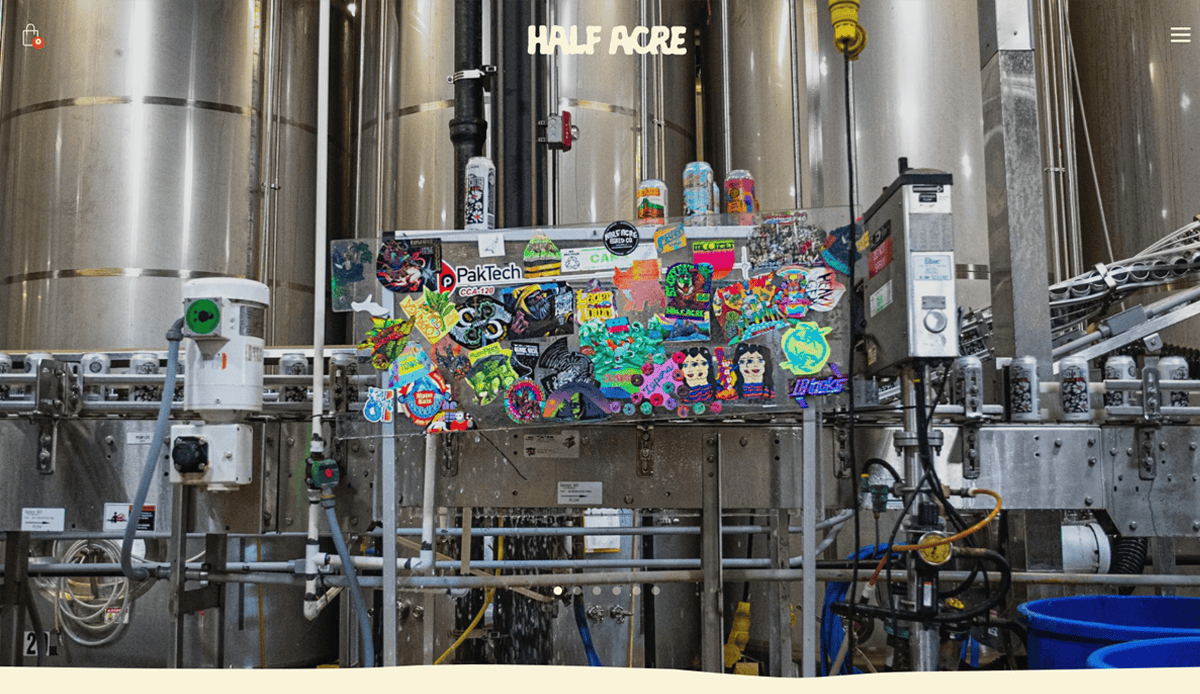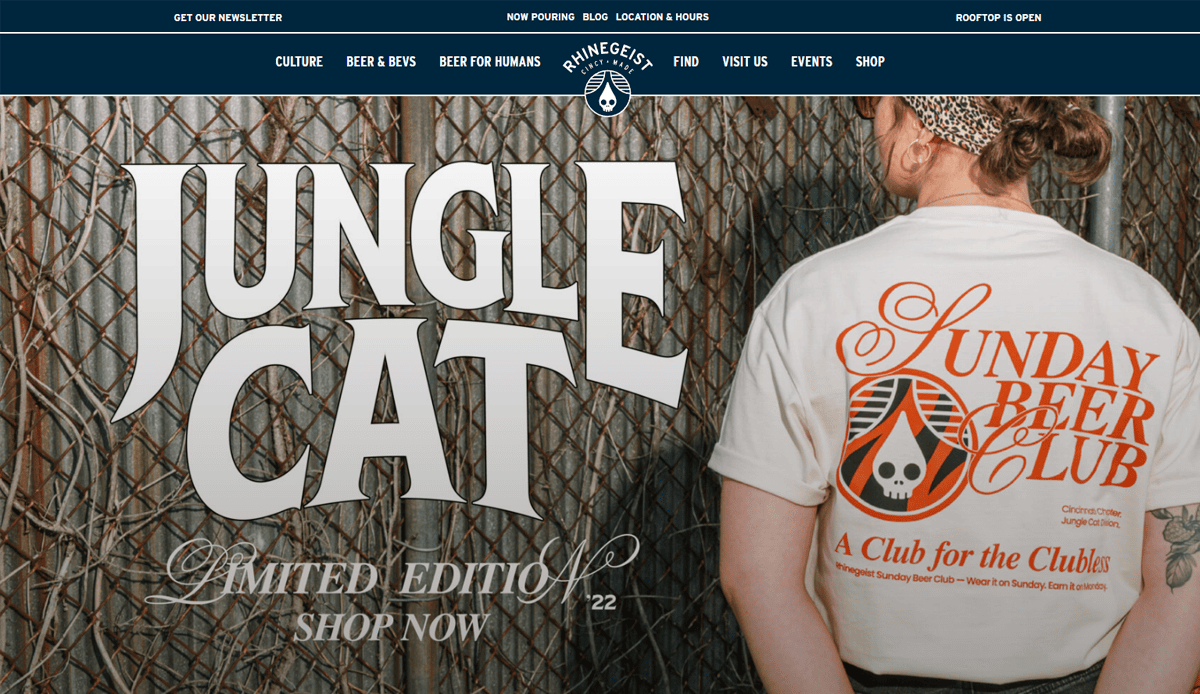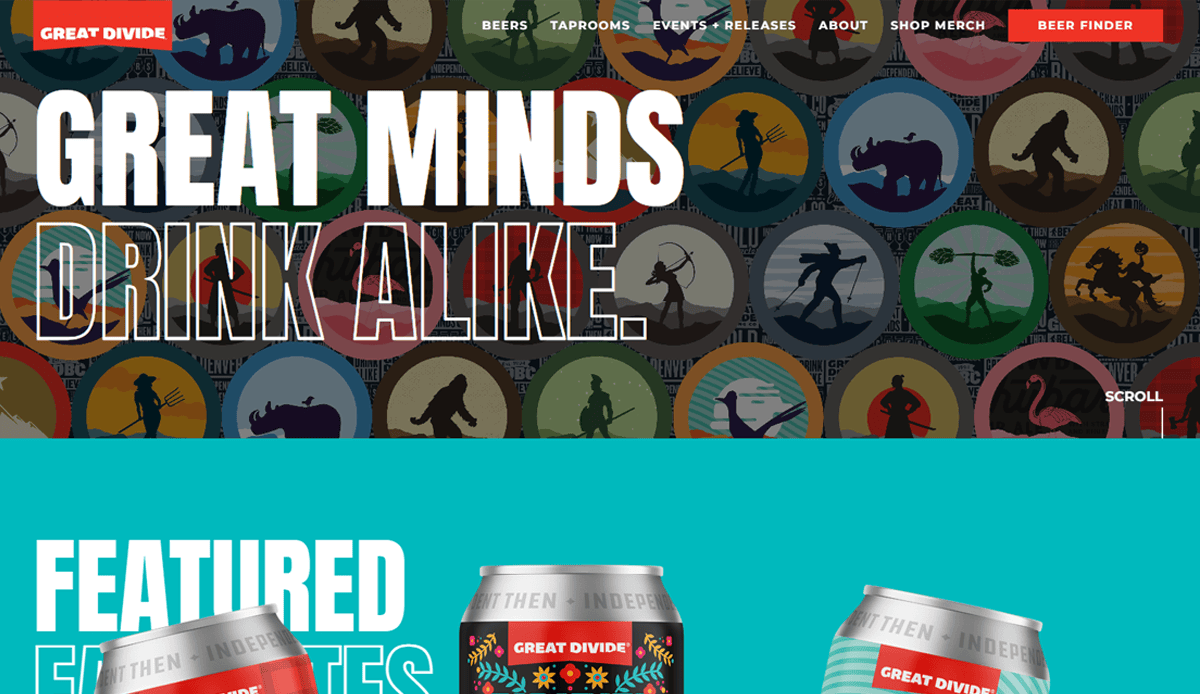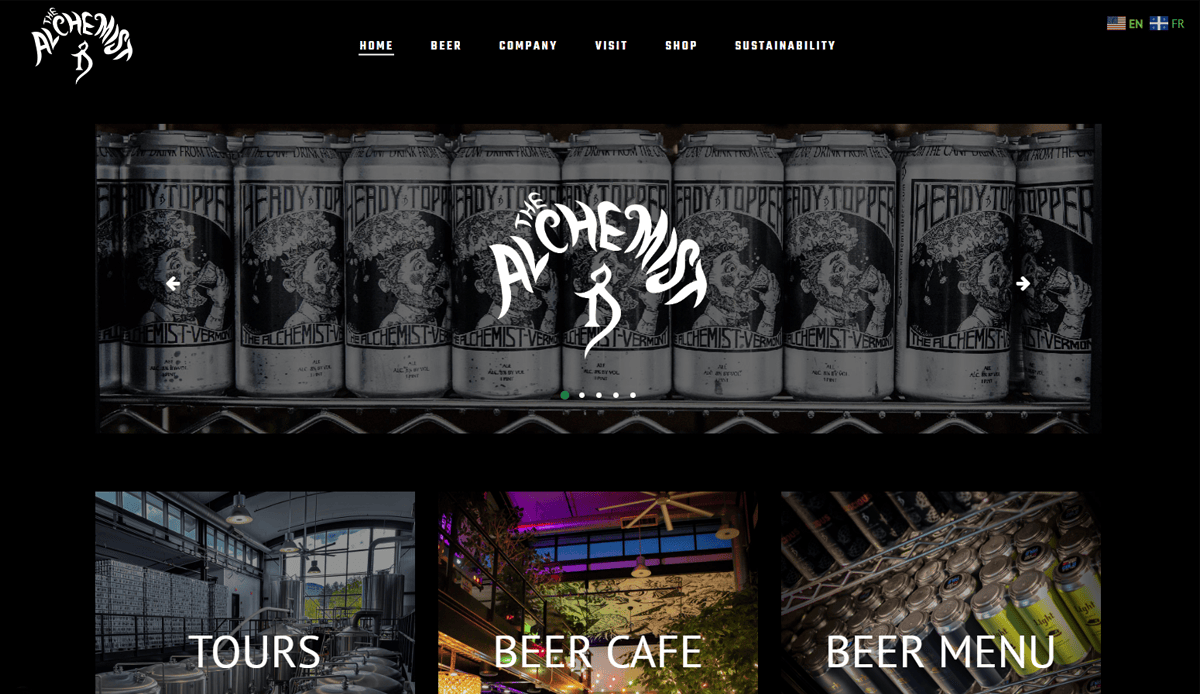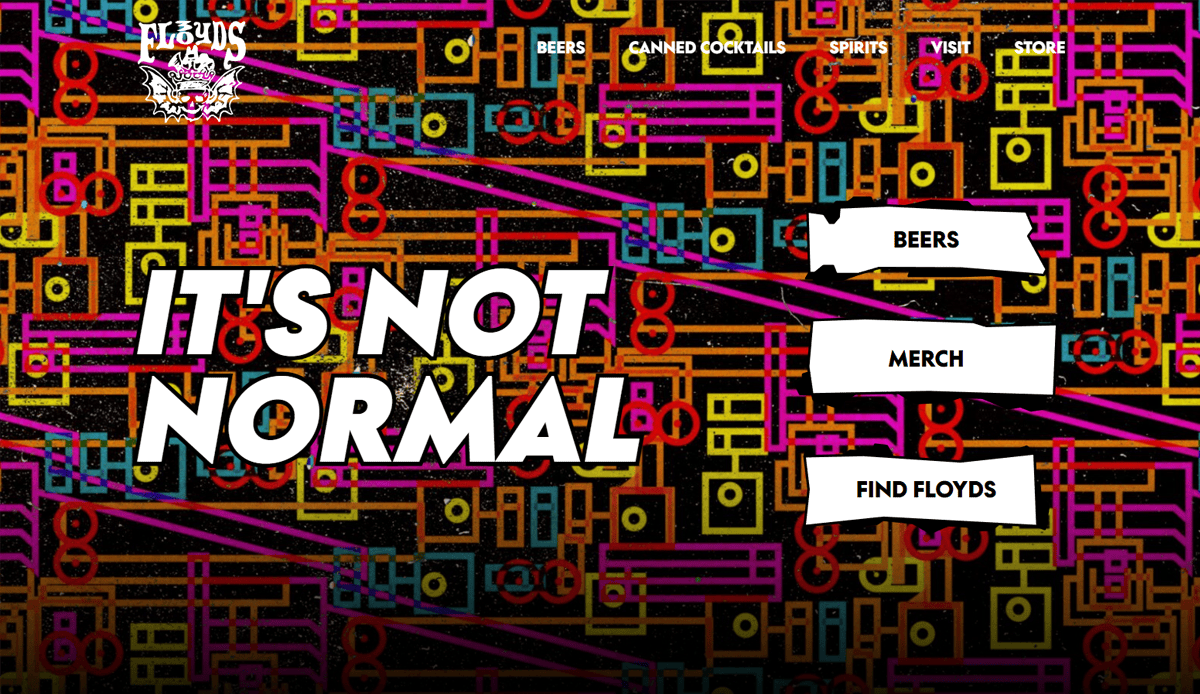Just looking for our Best Brewery Website examples list?
Key Takeaways:
- Craft meaning beyond beer—2025 demands sustainability, non-alcoholic releases, and local storytelling woven into your website design. Embed ingredient sourcing visuals, highlight eco-industry credentials, and link to your taproom events to resonate with value-driven drinkers. These are increasingly preferred in consumer research.
- Lead with accessibility and performance—compliant, inclusive design isn’t optional, it’s expected. Prioritize WCAG 2.1+ standards, fast mobile load times, and streamlined navigation to improve both legal compliance and user trust. These optimizations also support SEO performance.
- Elevate storytelling through interactive micro‑experiences. Create ingredient origin maps, interactive timelines, and event-driven narrative flows (e.g., “Brew Your Story” journeys) to engage users and differentiate from templated competitors.
- Integrate advanced features that directly support conversion. Include beer finder tools, embedded DTC ordering, taproom reservation modules, and dynamic event calendars—all designed to keep visitors engaged and drive measurable actions.
- Use schema, local SEO, and FAQs to win both SERPs and voice search. Apply structured data for events, beer menus, and product listings. Create long-tail content like blog pillars and FAQs—for example, “How to order from our taproom” or “Limited release calendar”—to capture voice search traffic and AI overview cards.
Why Every Brewery Needs a High-Performing Website
Your brewery’s website is no longer just a digital brochure—it’s your taproom’s most powerful sales tool. Today, the best websites aren’t just attractive; they’re designed to convert first-time visitors into loyal fans, drive taproom visits, and showcase your brand’s unique story.
As the market becomes more saturated and more competitive, having a modern website isn’t a nice-to-have—it’s business-critical. A high-performing site aligns with your physical experience, reflects the passion behind your brews, and guides visitors through a smooth, intuitive user experience (UX). Done right, your brewery’s site builds trust, supports distribution partnerships, and creates a lasting impression well beyond the first click.
This guide unpacks what separates the best brewery website from the forgettable. We’ll explore visual identity through logo design and typography, share how to optimize for conversions, and highlight what features help you stand out in our digital-first beer world. Whether you’re a startup brewery or looking to refresh an established online presence, you’ll learn exactly what it takes to become the best brewery in your market—online and off.
Website Planning & Purpose
Before a single line of code is written or a visual mockup is created, the most successful websites begin with one thing: a clear plan. For breweries, a website isn’t just a digital business card—it’s a tool to tell your story, attract loyal customers, and drive sales both online and in-person. A well-structured planning phase sets the foundation for a design that delivers results.
Start by identifying your core website goals. For most breweries, these fall into four key areas: boosting taproom visits, featuring your craft beer lineup, selling merchandise or beer online, and building your business’s story. Each of these objectives directly impacts how your website should be structured. For example, if your priority is growing your taproom audience, your homepage should make hours, location, and upcoming events prominent. If you’re leaning into e-commerce, you’ll need streamlined product pages, cart functionality, and mobile-first purchasing.
Next, outline your customer journeys. Ask: What information do new visitors need versus returning fans? A first-time user might look for your beer list, brand values, or directions, while a loyal local may want to quickly check today’s events or reserve a private tour. Planning content around these journeys ensures the visitor experience feels personalized and intuitive.
This is also the phase where many breweries make critical technical decisions—like which platform to build on (WordPress is popular for its flexibility), whether to use custom designs or pre-built templates, and what features they need at launch versus future phases. Accessibility, performance, and local SEO considerations should also be mapped from the start to avoid costly redesigns later.
Ultimately, the planning phase is where a brewery sets the tone for its entire digital presence. With a clear purpose and strategic goals in place, your website becomes a high-performing asset, not just a pretty page.
Design Principles for Effective Websites
Designing a successful website starts with embracing key design principles that enhance both visual appeal and UX. While aesthetics are critical, great design goes beyond good looks—it guides visitors, supports your identity, and drives results.
Start with clarity. Your website should be easy to navigate, with intuitive gateways and a layout that makes essential information—like your beer list, taproom hours, and events—readily accessible. Visitors shouldn’t have to hunt for details. Use a clear visual hierarchy with bold headings, scannable text, and consistent formatting to lead users through the content.
Balance creativity with functionality. While breweries often lean into bold visuals and personality-driven graphics, avoid overwhelming users with clutter or confusing layouts. High-quality photography, textured backgrounds, and stylized typography can all amplify your presence online, but they need to support, not distract from, usability. Every design element should have a purpose.
Consistency builds credibility. Use a cohesive color palette that aligns with your logo and can scale across digital and print materials. Stick to a set of fonts that are legible and visually aligned with your identity. This uniformity reinforces your brand in every interaction—from your homepage to your beer pages to your online store.
Mobile-first design is essential. Most visitors will interact with your website from a mobile device, especially when searching for directions, events, or food trucks on the go. Design with smaller screens in mind first, ensuring that all content, buttons, and interactive elements are optimized for touch navigation and load quickly.
Accessibility matters more than ever. Following ADA compliance guidelines, use sufficient color contrast, provide alt text for images, and design for screen reader compatibility. These practices expand your reach and contribute to better SEO and user trust.
A strong website reflects the same care and craft that goes into brewing beer. With clear navigation, intentional branding, and thoughtful layout, your design creates an experience that leaves a lasting impression and turns visitors into fans.
Content & Navigation Strategy
When it comes to website design, content and navigation must work hand-in-hand to guide visitors, answer their questions, and move them toward action. A well-structured content strategy organizes information logically, while smart navigation makes it easy to find.
Start by defining your core pages. At a minimum, every website should include a homepage, a beer or products page, an about page, a taproom or location page, an events calendar, and a contact page. If you sell beer or merchandise online, include a store with product filtering and cart functionality. Each page should serve a specific purpose and be built around what your visitors most want to know.
Structure your navigation with clarity and simplicity. Use top-level menu items that make sense at a glance—like “Our Beers,” “Visit,” “Events,” and “Shop.” Avoid dropdowns that are too deep or crowded; most users won’t click past two levels. Highlight your most visited sections, such as your beer list or taproom hours, in the main menu or via callouts on the homepage.
For content, focus on clarity and relevance. Use headlines and subheadings to break up sections and make them easy to scan. Each page should lead with the most important information first, such as a short description of your brewery, your flagship beers, or upcoming events. Avoid fluff and write with your audience in mind: What do they need to know, and what action do you want them to take?
Include calls to action on every page. Whether it’s “View Our Beers,” “Reserve a Table,” or “Join Our Mailing List,” every page should invite engagement. Internal linking between content—like linking from a beer description to an event that features that beer—keeps visitors moving through your site.
Don’t forget local SEO. Mention your location throughout your site, especially on your taproom and contact pages. Embed Google Maps, include nearby landmarks, and use schema markup to help search engines understand and feature your business in local results.
With the right content hierarchy and intuitive design, your website doesn’t just look good—it becomes a powerful tool to attract visitors, drive engagement, and grow your presence online.
Visual Elements That Elevate Websites
Visual design plays a vital role in how visitors experience your brewery online. From the moment someone lands on your homepage, the images, colors, and graphic elements you use should evoke your company’s personality and invite them to explore further. In a crowded craft beer market, a strong visual identity sets your brewery apart and builds emotional connections.
Photography is a cornerstone of effective website design. Use high-quality, original photos that highlight your space, people, brewing process, and of course, your beer. Avoid generic stock imagery—it undermines authenticity. Feature close-ups of your brews, wide shots of your taproom, and behind-the-scenes images of your team in action. These visuals build trust and give visitors a taste of your atmosphere before they even walk in the door.
Your color palette should align with your brand identity and be used consistently throughout the site. Whether your brewery leans rustic, modern, playful, or industrial, color sets the tone. Pair bold accents with neutral backgrounds to create contrast and guide the eye. Use color to draw attention to calls to action like “View Beer List” or “Order Online.”
Typography should also reflect your brewery’s voice. Custom fonts, when used sparingly, can add personality, especially in headlines or logo treatments. Body text must remain readable on all devices, so choose web-safe fonts and test for legibility across sizes and screens.
Whitespace is not wasted space. It creates breathing room between elements and helps visitors focus on key content. Avoid cramming your pages with visuals or text. Instead, use spacing to create flow and allow the most important details—like your flagship beers or event promos—to stand out.
Graphic elements like icons, line illustrations, and branded patterns can reinforce your identity when used consistently. They’re especially useful for supporting content-heavy areas like beer descriptions or event listings without overwhelming the page.
Every visual decision should tie back to the user experience. Whether it’s guiding users to the right content, evoking a feeling, or reinforcing brand recognition, visual elements should work together to create a cohesive, engaging, and memorable journey through your brewery’s story.
Ongoing WordPress Maintenance
A website built on WordPress offers flexibility and ease of use, but maintaining it properly is just as important as designing it well. Without consistent upkeep, even the best-looking site can become slow, vulnerable, or outdated, putting your customer experience and business reputation at risk.
Routine updates are essential. WordPress regularly releases core updates, and so do plugins and themes. These updates improve performance, fix bugs, and patch security issues. Failing to keep everything current can lead to broken features, compatibility problems, or worse—hacks and data breaches. Schedule regular checks, at least monthly, to ensure your software stack stays up to date.
Backups protect your investment. A website includes more than just text—it holds your event schedules, online store, blog content, and more. Regular automated backups make it easy to recover if something goes wrong, whether from a plugin conflict, accidental deletion, or server issue.
Speed and performance optimizations should also be part of your maintenance routine. As you add new images or content, page load times can suffer. Compress images, enable caching, and periodically test your site speed to keep things running smoothly, especially for mobile visitors checking your hours or events on the go.
Security hardening is crucial for WordPress sites. Install a reputable security plugin, enable two-factor authentication for admin logins, and use a strong password policy. Run malware scans regularly and remove unused plugins or themes that could open the door to vulnerabilities.
Content reviews are also part of maintenance. Keep your beer lists current, update your events calendar, and ensure that all taproom info—like hours or holiday closings—is accurate. Fresh content signals to visitors and search engines alike that your site is active and reliable.
Partnering with a maintenance provider gives breweries peace of mind. Instead of worrying about plugins, backups, or downtime, your team can focus on brewing and running the business. A well-maintained WordPress site doesn’t just look professional—it performs better, ranks higher, and supports long-term growth for your business.
Best Brewery Website Design Examples
1. Revolution Brewing
Location: Chicago, IL
Key Takeaways:
- Bold branding with striking graphics and custom illustrations.
- Smooth user experience with clearly structured beer and taproom pages.
- Interactive can and beer archive that engages repeat visitors.
2. Tree House Brewing Company
Location: Charlton, MA
Key Takeaways:
- Immersive visuals featuring bold imagery and natural color palettes.
- Seamless online store integration for beer sales and merchandise.
- Focus on storytelling and brewery culture through engaging content.
3. Trillium Brewing
Location: Boston, MA
Key Takeaways:
- Clean and modern design with a user-friendly beer archive.
- Integrated taproom info and booking functionality.
- Visually engaging photography that captures the brewing process.
4. Surly Brewing Co.
Location: Minneapolis, MN
Key Takeaways:
- High-energy branding with bold typography and visual storytelling.
- Streamlined navigation that directs users to events and beer info quickly.
- Clear CTAs driving in-person engagement and merchandise sales.
5. Modern Times Beer
Location: San Diego, CA
Key Takeaways:
- Retro-modern aesthetic with dynamic fonts and color use.
- Visually engaging layout supporting immersive storytelling.
- Custom product pages with e-commerce functionality.
6. Pipeworks Brewing Company
Location: Chicago, IL
Key Takeaways:
- Artistic and graphic-heavy branding is consistent across all pages.
- Interactive artwork gallery and rotating beer selection.
- Easy-to-read beer descriptions with personality and flair.
7. Allagash Brewing Company
Location: Portland, ME
Key Takeaways:
- Elegant branding with a focus on sustainability and community.
- Detailed beer education pages with pairing guides.
- Optimized for mobile browsing and taproom visits.
8. Dogfish Head Craft Brewery
Location: Milton, DE
Key Takeaways:
- Fun and quirky design showcasing the brand’s off-centered personality.
- Bold callouts for news, events, and featured beers.
- Visually rich layout with animations and movement.
9. New Belgium Brewing
Location: Fort Collins, CO
Key Takeaways:
- Vibrant visuals and playful design reflecting brand personality.
- Comprehensive sustainability and community engagement sections.
- Interactive beer finder tool tailored to regional availability.
10. Rogue Ales & Spirits
Location: Newport, OR
Key Takeaways:
- Clean, modern design with bold imagery and strong contrast.
- Product pages integrate detailed specs and pairing notes.
- User-friendly online store and brewery experience section.
11. Skeleton Key Brewery
Location: Woodridge, IL
Key Takeaways:
- Stylish layout showcasing unique branding and story.
- Embedded social feeds and events calendar.
- Clean mobile experience for on-the-go taproom access.
12. Lagunitas Brewing Company
Location: Petaluma, CA
Key Takeaways:
- Quirky, approachable branding carried through the entire site.
- Easy-to-navigate beer catalog with filtering options.
- Strong use of brand voice and storytelling in copy.
13. Black Horizon Brewing Company
Location: Willowbrook, IL
Key Takeaways:
- Dark-themed modern layout reflecting the brand’s bold personality.
- Visually engaging beer descriptions with custom icons.
- Smooth navigation between beers, events, and FAQs.
14. Pollyanna Brewing Company
Location: Lemont, IL
Key Takeaways:
- Earthy tones paired with bold imagery that match the brand identity.
- Streamlined taproom information and directions.
- Dynamic homepage banners with seasonal callouts.
15. Goldfinger Brewing Company
Location: Downers Grove, IL
Key Takeaways:
- Elegant and timeless design showcasing a rich brewing history.
- Custom-built beer presentation tool.
- Responsive layout ensures a consistent online experience.
16. Half Acre Beer Company
Location: Chicago, IL
Key Takeaways:
- Bold visual identity paired with easy navigation.
- Clear event listings and shop integration.
- Optimized content for mobile search results.
17. Rhinegeist Brewery
Location: Cincinnati, OH
Key Takeaways:
- Bright, modern layout with strong color contrast.
- Excellent user experience on both desktop and mobile.
- Robust product catalog with detailed filters.
18. Great Divide Brewing Co.
Location: Denver, CO
Key Takeaways:
- Vintage design touches matched with modern layout principles.
- Embedded press mentions and community highlights as social proof.
- Event-driven homepage updates and beer news.
19. The Alchemist
Location: Stowe, VT
Key Takeaways:
- Clean design that prioritizes storytelling and visual experience.
- Use of full-width imagery to highlight beer releases.
- Simple, effective beer navigation system.
20. Three Floyds Brewing
Location: Munster, IN
Key Takeaways:
- Dark, edgy design matching their punk-metal brand voice.
- Dynamic visuals and animations for an immersive online experience.
- Fully integrated e-commerce for merchandise and beer sales.
Build a Website That Stands Out and Sells More Beer
Your brewery deserves more than a generic template—it needs a well-designed website that reflects your unique character, brewing philosophy, and bold branding guide. A great website captures the attention of potential customers, and delivers a user-friendly experience that helps visitors easily find essential details like hours, events, and your beer list. From bold typography and earthy tones to clean lines and high-quality imagery, every design feature should contribute to an immersive experience that tells your story and drives results.
Whether you’re showcasing photos of your brewery, optimizing your website’s content for search results, or implementing a marketing plan that supports both branding and sales, choosing the right website strategy is critical for success in the craft beer industry. We’ve collected the best brewery website examples, layout tips, and content strategies to help your site stand out and perform like your best-selling brew.
Want a website that showcases your unique offerings, elevates your brewery branding, and helps you sell more beer?
Get your custom brewery web development strategy with our experts today!
FAQs About Professional Brewery Website Design
What pages should a website include?
A well-designed website for craft breweries should include a homepage, beer list, taproom or visit page, events calendar, contact page, and online shop if applicable. These are the core pages where guests can easily find the information you want them to see, including how to visit your brewery and what beers are available. Every page should support your brand with a modern layout, bold imagery, and an approachable design style.
How does web design affect search engine optimization?
The design process directly impacts SEO by influencing page load speed, mobile responsiveness, and structured content. A fully functional site with clean code, intuitive gateways, and optimized media makes it easier for search engines to crawl and rank. Learn more about our SEO and Local Optimization services that enhance your visibility and get your site in front of more craft beer lovers.
What makes a website stand out?
A website stands out by blending great design features with storytelling. Visually engaging elements like high-quality photography, bold imagery, and earthy color tones create an immersive experience. Incorporating social proof, like reviews or press mentions, helps build trust. The best websites also prioritize user-friendly layouts that make it easy to read, navigate, and take action, whether that’s placing an order or booking a tour.
How do I optimize my website to drive more visits to my taproom?
To drive more visitors, optimize your website’s content with local keywords, update your events regularly, and embed maps and contact information where guests can easily find it. Adding calls-to-action like “Visit Our Taproom” with clear directions and hours improves engagement. Review our Local SEO strategy for brick-and-mortar breweries to make your location easier to find online.
Can I see website examples before starting the design process?
Absolutely. We’ve collected the best examples of sites in this field that feature modern design, engaging content, and fully functional experiences. These examples showcase how a well-planned website can support your brand and help you accomplish with your site everything from growing online sales to increasing foot traffic. See how other craft breweries are building digital experiences that pour as smoothly as their best beer on our Brewery Website Portfolio.
How important is branding in a brewery’s website design?
Branding is essential. Your brewery’s site should reflect your unique identity through consistent fonts, colors, voice, and imagery. The website showcases your brewing philosophy and gives visitors a taste of what makes your brand different. An aligned brand experience helps retain visitors, generate loyalty, and reinforces every interaction, both online and in your taproom.
What kind of content helps improve a website’s performance?
Focus on content that tells your story and engages customers. This includes your beer descriptions, team bios, brewing process, and events. Use high-quality photos and bold imagery to create an emotional connection. Clear CTAs, detailed FAQs, and a regularly updated blog also help improve search visibility and user engagement. Need help with content strategy? Visit our WordPress Web Design Services for breweries.
Is it necessary to have a mobile-friendly design?
Yes, mobile-friendliness is no longer optional. Most visitors interact with your site from a smartphone, especially when trying to visit your brewery or check out your beer list. A mobile-optimized, responsive layout ensures every user has a seamless online experience, no matter the device.
What role does social proof play on a website?
Social proof builds trust with potential customers. Including testimonials, media mentions, awards, or user-generated photos shows that others enjoy your brewery. It strengthens credibility and can influence decisions, especially for new visitors who haven’t tried your beer yet. Add social proof throughout your website to support calls to action and reinforce brand loyalty.
How do I start building my brewery website today?
Start by defining what you want to accomplish with your site. Whether it’s increasing event attendance, showcasing your flagship beer, or launching e-commerce, the right partner can guide you through a smooth design process. Our top-tier digital marketing agency specializes in custom WordPress websites for the brewery industry and can help you launch a website today that performs as great as your beer tastes.

